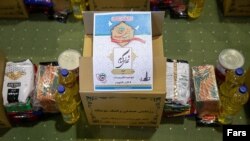A new report by the Islamic Republic's National Nutrition & Food Technology Research Institute (NNFTRI) shows that many Iranian families have either drastically reduced eating red meat, chicken and fish, eggs, and dairy products or eliminated them entirely from their dinner tables.
NNFTRI's research was conducted in the second quarter of 2020 and included more than 22,000 urban and rural households.
An additional report from the Iranian Students Polling Agency (ISPA) reported that more than eight percent of Iranian households in 2019 did not eat red meat, which also showed a 3.5 percent increase in households who could not afford red meat in 2019.
According to the survey, 14.4% of Iranian households ate red meat only a few times last year, compared to 40.2 percent that said they eat red meat a few days a week, and 32.8 percent consuming red meat a few days a month. There is also a 4.3% percent minority who consumes red meat every day.
In July, reports of rising red meat prices circulated Iran, with a local news website, Tabnak, attributing the spiking prices to the smuggling of red meat to neighboring countries. "Due to fluctuations in exchange rates, the incentive to smuggle out livestock has increased," Tabnak reported.
In recent years, the prices of goods and consumables in Iran have risen sharply, with the Deputy Director of the Statistical Center of Iran (SCI) for Economic Affairs, Ayoub Faramarzi, saying in a statement that the inflation rate in Iran should not reflect the high costs of goods and services in the country.
Faramarzi, who admitted earlier this summer that Iran had the fourth-highest inflation rate in the world, previously promised that the SCI's data on price quotes would be soon made public, "after the removal of its classified parts."
In comments reported by the Tehran-based 90-Eghtesad economics news website on July 28, Faramarzi added, "The consumer price index [CPI] for 475 goods has risen by 26 percent, causing Iran to have the fourth highest inflation rate in the world."
"We calculate the inflation rate using a global standard formula. We determined the price of 475 products by speaking to families in 231 cities and 626 villages across the country about their monthly household expenses, the cost of goods, and an average consumption of certain products."






